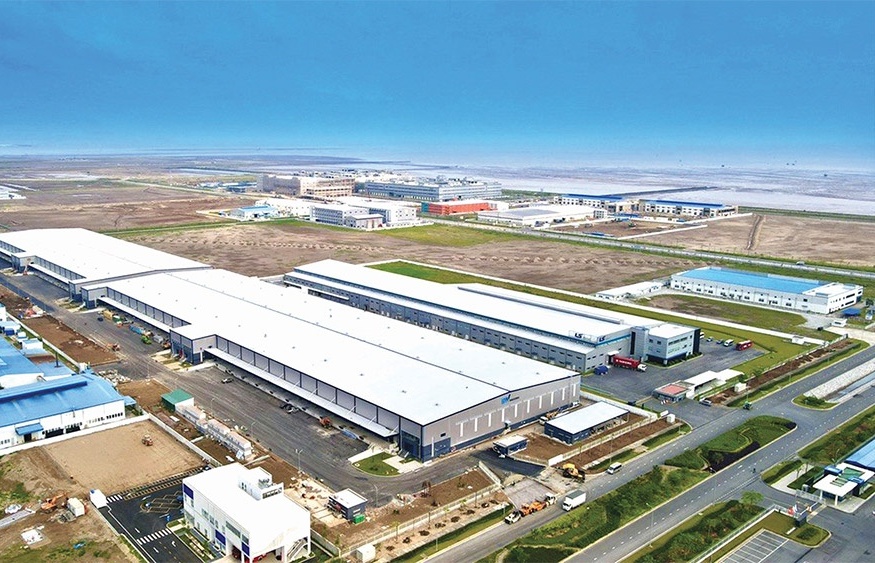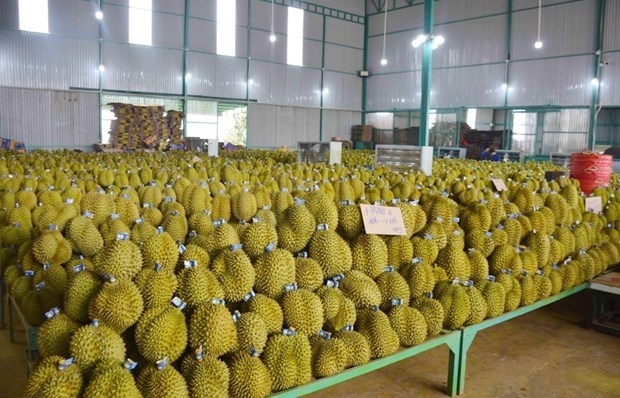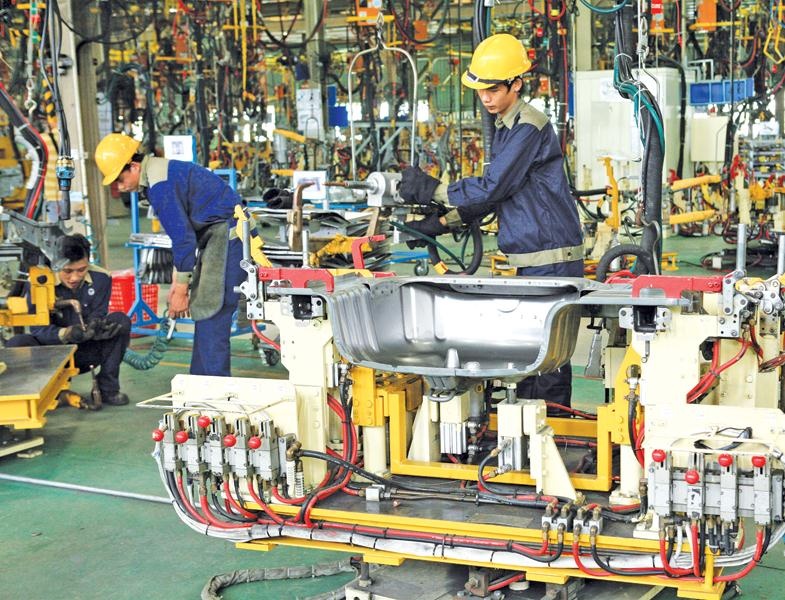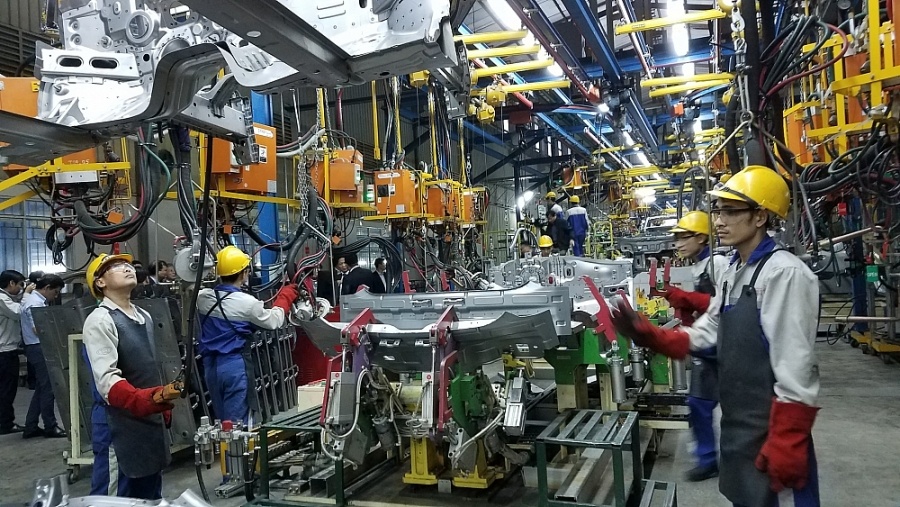Vietnam’s manufacturing indicator on a decline: HSBC
The slowdown was highlighted by a drop from 48.3 in May to 46.6 in June in the seasonally adjusted HSBC Vietnam Manufacturing Purchasing Managers’ Index (PMI).
The PMI dropped from 49.5 in April to 48.3 in May, its lowest level for three months, and from 50.0 in March to 49.5 in April, signaling that overall business conditions worsened slightly over the month, following stagnation during the previous survey period.
The latest PMI data pointed to further worsening of business conditions across the Vietnamese manufacturing sector, and was the sharpest decline since February, said the report compiled by HSBC-appointed partner, Markit.
The index has now posted below the neutral 50.0 value for three months running, beginning in April.
Worsening situations
The overall deterioration in business conditions reflected a marked decline in new order intakes in June, said the report.
Incoming new business fell for the second successive month at the same high rate as was seen in May, both of which were the fastest since the survey began in April 2011.
Anecdotal evidence widely suggested that the global economic slowdown had resulted in a squeeze on spending among clients.
The latest data pointed to a marginal reduction in new export work, which was attributed to softer demand from both developed and emerging markets.
Lower levels of new orders resulted in reduced production requirements in June, with output volumes declining for the third consecutive month, and at the steepest pace since February.
Manufacturers sought to utilize spare capacity in June by reducing their levels of work-in-hand.
Outstanding business dropped at a rate that tied for the fastest pace in 15 months of data collection.
Post-production inventory levels increased at a solid rate in June, reversing the downward trend seen in May.
A number of manufacturers noted that lower-than-expected sales had resulted in a buildup of unwanted inventory.
This in turn encouraged efforts among firms to alleviate pressure on working capital by reducing their input buying.
June’s data also signaled a sharp drop in purchasing activity and a steeper fall in pre-production inventories than was recorded in May.
Softer demand and lower production levels led to a decrease in employment numbers in June, thereby ending a three-month period of net job creation.
Manufacturers mostly noted that lower workforce levels were achieved by the non-replacement of voluntary leavers, rather than forced staff departures.
Input, output prices down
Average input costs meanwhile fell for the first time since January, and at the most marked pace since the survey began in April 2011. Reports from survey respondents frequently mentioned lower oil-related prices as a major reason behind the lower costs.
Output charges in the manufacturing sector were also reduced in June, and at a much faster pace than that registered during the previous month.
“The continued slowdown of manufacturing activity suggests that businesses continue to face tough operating conditions in Vietnam. Demand is low both internally and externally,” said Trinh Nguyen, Asia Economist at HSBC.
“Prices are continuing to decelerate due to low demand and commodity prices, as indicated by the drop in input prices.”
“The SBV lowered rates in the first half of the year by 400bp to spur spending in Vietnam. This is likely to filter through in the second half, boosting economic activity,” said Trinh Nguyen.
Global picture
Production in many parts of Asia also weakened in June, while inflation remains within control.
China’s Manufacturing PMI, as published by the Chinese government, showed that the indicator slipped to 50.2 from 50.4 last month, indicating that China's industrial output continued to fall in June.
Meanwhile, China's June PMI, as surveyed by HSBC and focusing on smaller businesses, fell to 48.2 from 48.4 in May.
The same survey also showed that manufacturing in South Korea and Taiwan fell into decline after several months of growth.
According to a survey by HSBC, in June, South Korea's PMI fell to 49.4 from the previous month’s 51, and Taiwan's PMI fell to 49.2 from 50.5 last month.
However, inflation in these countries is declining, allowing central banks there to apply easing policies to spur growth, especially in China and Korea, Tim Condon, chief economist at ING Bank Asia, told The Wall Street Journal.
Korean consumer prices in June rose 2.2 percent over the same period last year, lower than the 2.4 percent forecast by economists, but still an increase of 2.5 percent in May.
India and Indonesia are exceptions to the drops in PMI, as they still resist difficult conditions much better than other Asian export-led countries thanks to strong domestic demand.
However, Indonesia also runs faster inflation compared to regional countries, with a 4.53 percent increase in June from 4.45 percent last month.
|
HSBC Vietnam provided the Manufacturing PMI in Vietnam – an early indication of manufacturing sector operating conditions in Vietnam, for the first time ever on May 8, 2012. PMIs are among the most closely-watched surveys in the world and are essential data for economic analysts, financial market players, and other decision makers such as central banks that require early indicators of changing market conditions when setting interest rates, said HSBC. The HSBC Vietnam Manufacturing PMI, compiled by Markit, is based on data compiled from monthly replies to questionnaires sent to purchasing executives at around 400 manufacturing companies. The survey has been conducted since April 2011 and provides an early indication of manufacturing sector operating conditions in Vietnam. The panel is stratified by the Standard Industrial Classification (SIC) group, and company size is based on industry contribution to Vietnamese manufacturing GDP. |
What the stars mean:
★ Poor ★ ★ Promising ★★★ Good ★★★★ Very good ★★★★★ Exceptional
Related Contents
Latest News
More News
- Vietnamese startups bag $35.7 million in first quarter of 2024 (April 02, 2024 | 16:40)
- Investors increasingly optimistic about manufacturing sector (April 01, 2024 | 14:51)
- Soaring German investments are testament to trust in Vietnam (April 01, 2024 | 09:52)
- Prime Minister works with Japan Business Federation (March 29, 2024 | 08:00)
- Game-changing ESG initiatives expected (March 26, 2024 | 09:09)
- FDI flows in Vietnam forecast to boom this year (March 22, 2024 | 11:56)
- Businesses face mounting hardships amid rate hike (March 20, 2024 | 16:33)
- Government and enterprises outline efforts to implement green growth strategies at VBF 2024 (March 19, 2024 | 15:31)
- Vietnam Innovation Challenge 2024 kicks off (March 19, 2024 | 10:57)
- Credit quality rise heads up business help (March 18, 2024 | 14:54)




 Tag:
Tag:



















 Mobile Version
Mobile Version